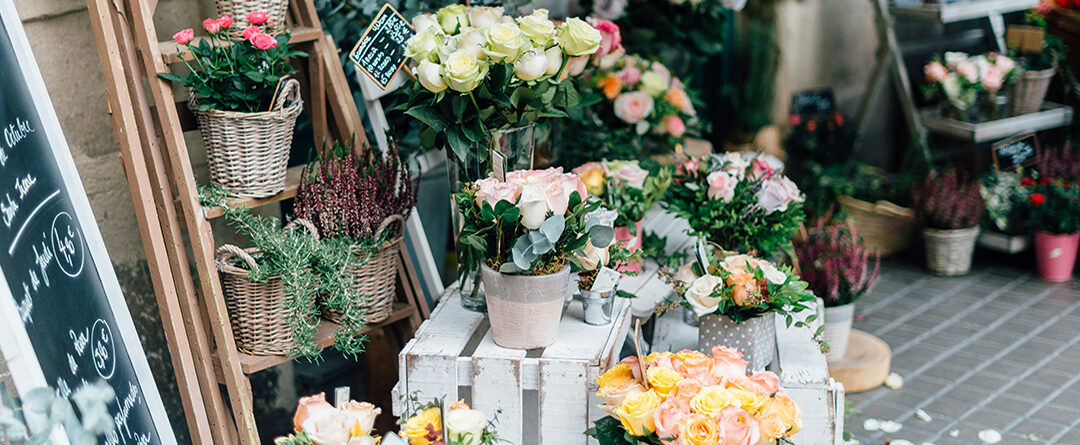by the Rev. Celeste Kennel-Shank
Genesis 1: 11–13, 29–30
Plants are a gift from God. Most of us aren’t accustomed to thinking of them that way. But it’s there in Genesis. God creates plants of various kinds and calls them good. After creating animals and other creatures with the breath of life in them, God offers plants as a gift to sustain us.
We all know the benefits of eating our vegetables. Yet, being food is not the only way plants nourish us. Recently, I attended a conference on “Living Well During Climate Change” at the University of Chicago Divinity School, where I studied ministry. I heard a presentation on the connections between our environment and neuroscience. The professor spoke about the benefits to our well-being and healing when we connect with plants, whether that’s living in an area with more tree canopy or visiting parks more often.
I thought of Anna Mae Patterson and her intuitive sense that people needed plants in their homes. Anna Mae was part of the Christian community in Washington, D.C., where I was formed and raised.
Anna Mae dreamed of a plant shop. This was an era when houseplants were not common. One measure of that: she looked in the phone book and didn’t see a category for indoor plant shops. There were florists and plant nurseries, but even then, the nurseries were rarely, if ever, in an inner-city neighborhood such as theirs.
In the Community of Christ, people formed a group to talk about Anna Mae’s dream and how it might come into being. They chose the name Third Day, drawing from Genesis 1:11, when God calls forth from the land “vegetation: seed-bearing plants and trees on the land that bear fruit with seed in it, according to their various kinds.” (NIV) The Third Day also represented the mystery of new life, being the day Jesus rose from the dead.
The shop opened in January 1972, announcing itself as “an affirmation of life through green growing things.” In addition to its inventory, “it will also carry a hope, a dream—that the gentle mystery of greenness and growth will bring renewed spirit to the city and those who live there.” The shop blurred the lines between business and nonprofit—a kind of social enterprise before that term was commonly used. They sought to put people first and money second. Its basic values were “reverence for life” and “radical self-expenditure: personally, by a willingness to give of oneself; corporately, by basing decisions on values rather than self-preservation.” While the shop didn’t actively evangelize customers, it was a ministry in its own way. Anna Mae said, “If you serve people with something that is important for their flourishing, their well-being, that is a statement of the love of God and Christian witness.”
This is also true of plants. They offer us serenity, beauty, and sustenance. We can ignore them if we wish, passing them by without looking up at the tree canopy or gazing down at the flowers in bloom. They won’t demand our attention. Yet when we do look to them, we may find them to be an expression of God’s love and care from their place in God’s creation.
In scripture, some scholars see the Genesis story of creation as being about God creating order out of chaos. Scientific taxonomy takes order to an extreme, with everything fitting into an extensive naming system. Returning to these verses from Genesis, there is simplicity in distinguishing between “plants that scatter their own seeds” with pine cones and the like and flowering plants that bear “fruit with its own seed in it” for animals to eat and spread the seeds. (Inclusive Bible translation)
In this movement from the place of plants first on their own and then in relation to the rest of creation, I see not order out of chaos but instead the web of living things. Ecosystems are not neat and tidy, whether or not we classify the creatures in them.
And it is not only in what we usually call nature that different species of creatures can have a mutual relationship.
I think of the honey locust trees outside my windows on the city street where I live. I mulch underneath them to preserve water and to reduce competition from grass and weeds. In turn, they clean the air around me and enhance my well-being. Praying while looking up at their lacy branches brings a sense of peace to my mind and spirit. Even in the midst of challenging times, the beauty of those trees grounds me in God’s sustenance.
Since the act of creation, God has given us the gift of plants. We cultivate and care for them, and they nourish and sustain us.
Discussion Questions:
1. Do you interact with plants, whether by caring for houseplants, gardening, or going to parks?
2. In what ways do you feel God’s gift of plants nourishing your well-being?
3. How might you help your community flourish through connection with plants, for example, by supporting local agriculture at a farmers’ market or joining a cleanup day for a local park?
Closing prayer:
God, who called forth vegetation from the earth, thank you for the gift of plants. When we take a bite of a ripe piece of fruit, smell a blossoming flower, or gaze at the tree canopy overhead, may we know your provision and your peace. Amen.
 The Rev. Celeste Kennel-Shank is the author of What You Sow Is a Bare Seed: A Countercultural Christian Community during Five Decades of Change. A portion of this essay is adapted from that book.
The Rev. Celeste Kennel-Shank is the author of What You Sow Is a Bare Seed: A Countercultural Christian Community during Five Decades of Change. A portion of this essay is adapted from that book.
Read, “The spiritual life of gardening“, by the Rev. Celeste Kennel-Shank

